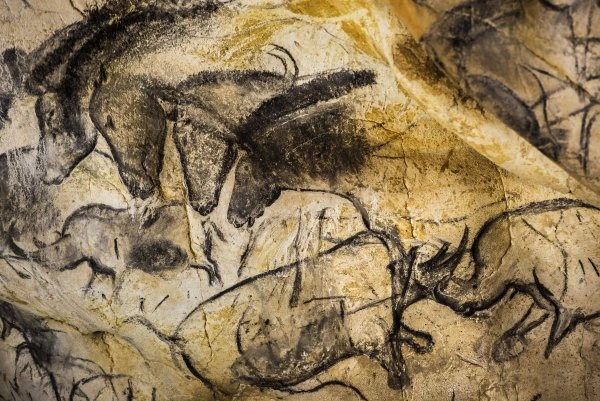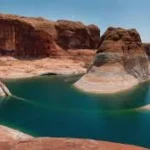
Welcome to a journey through one of the most remarkable archaeological sites in the world—Chauvet Cave. Discovered in 1994 in the Ardèche region of France, this prehistoric cave is renowned for its stunning cave paintings that date back over 30,000 years. These ancient artworks offer a fascinating glimpse into the lives of our early ancestors, showcasing their artistic expression and connection to the world around them. In this blog, we’ll explore 25 intriguing facts about Chauvet Cave, from its breathtaking art to the scientific discoveries that continue to unfold. Whether you’re a history buff, an art enthusiast, or simply curious about our human past, there’s something here for everyone. Let’s delve into the depths of Chauvet Cave and uncover the secrets it holds!
Discovery Date: The Chauvet Cave was discovered on December 18, 1994, by a team of three speleologists. This momentous finding marked a significant milestone in archaeology, as the cave’s pristine condition and rich collection of prehistoric art provided invaluable insights into early human creativity and culture. The cave’s discovery was serendipitous, as the team was exploring the region’s extensive cave systems, leading to the unveiling of one of the oldest and most important sites of prehistoric art known to date.
Discoverers: The cave was discovered by a trio of passionate speleologists: Jean-Marie Chauvet, Éliette Brunel, and Christian Hillaire. Their expertise in cave exploration and their commitment to understanding underground ecosystems played a crucial role in the discovery. The cave is named after Jean-Marie Chauvet, who was instrumental in documenting the finds. Their meticulous exploration and documentation of the cave’s features and artwork have contributed significantly to our understanding of prehistoric human life.
Location: Chauvet Cave is situated near Vallon-Pont-d’Arc in the Ardèche region of southeastern France. This picturesque area is characterized by its dramatic limestone cliffs, valleys, and the winding Ardèche River. The cave’s location is not only significant for its natural beauty but also for its geological features, which have helped preserve the artwork for thousands of years. The surrounding region is rich in archaeological sites, making it an important area for understanding prehistoric human settlement and activity.
Artwork Quantity: The cave contains over 1,000 prehistoric drawings and engravings, showcasing a remarkable array of artistic expression from the Upper Paleolithic period. These artworks provide a glimpse into the lives and beliefs of early humans, illustrating their interactions with the environment and the animals that inhabited it. The sheer volume and diversity of the artwork found in Chauvet Cave are unparalleled, making it a crucial site for researchers studying prehistoric art and culture.
Dating of Paintings: The oldest paintings in Chauvet Cave are dated to around 36,000 years ago, placing them in the Aurignacian period. This period is marked by significant advancements in human creativity and technology. The age of the artwork highlights the cognitive and artistic capabilities of early humans, suggesting that they possessed a complex understanding of their surroundings and the ability to convey their experiences through art. The dating of these paintings has provided critical information about the timeline of human artistic development.
Sealing of the Cave: The cave was sealed off by a rockfall approximately 20,000 years ago, which preserved its contents in an undisturbed state until its rediscovery in the late 20th century. This natural sealing created an environment that protected the cave from weathering and human interference, allowing the artwork to remain remarkably intact. The cave’s preservation provides a unique opportunity for scientists and archaeologists to study a snapshot of prehistoric life without the alterations that often occur in more accessible sites.
Decorated Area Size: The decorated area of Chauvet Cave extends over approximately 8,500 square meters, making it one of the largest collections of prehistoric cave art in the world. This extensive area features a variety of artistic styles and techniques, reflecting the diverse expressions of the artists who inhabited the cave. The size of the decorated space allows for a comprehensive study of the artistic practices of early humans and their cultural significance.
Animal Species Depicted: At least 13 different animal species are depicted in the cave art, including both common and now-extinct animals. These representations provide insight into the fauna that existed during the time of the artists and reflect the ecological dynamics of the region. The variety of species, including large mammals like mammoths and cave bears, indicates the importance of these animals in the lives of prehistoric humans, both as sources of sustenance and as subjects of cultural significance.
Animal Poses: The artwork includes over 400 different poses captured in the animal depictions, showcasing the artists’ keen observation skills and understanding of animal behavior. The dynamic and varied poses suggest that the artists were not only skilled in their craft but also had a deep connection with the animals they depicted. This attention to detail in representing movement and form illustrates the sophistication of prehistoric artistic expression.
Extinct Animals Depicted: The cave art includes depictions of now-extinct animals like cave bears, woolly rhinoceroses, and mammoths. These representations are crucial for understanding the biodiversity of the time and the interactions between humans and these large mammals. The presence of such species in the artwork highlights the significance of these animals in the cultural and spiritual life of the artists, as well as their role in the prehistoric ecosystem.
Panel of Lions: The “Panel of Lions” features at least 20 individual lions, showcasing the artists’ ability to capture the essence and majesty of these powerful creatures. This panel is particularly notable for its intricate details and the variety of poses depicted, which suggest a deep understanding of the animals’ anatomy and behavior. The presence of multiple lions within a single panel indicates the importance of this species in the artists’ environment, possibly reflecting their hunting practices or spiritual beliefs. The depiction of such formidable animals also raises questions about the relationship between early humans and apex predators during the Paleolithic era.
Length of a Panel: One panel extends for more than 12 meters and features handprints, geometric signs, and animals, illustrating the diverse range of artistic expression found within the cave. The combination of different elements within a single panel highlights the complexity of the artists’ intentions, potentially serving both aesthetic and communicative purposes. The inclusion of handprints suggests a personal connection to the artwork, while the geometric signs may indicate symbolic meanings or rituals. This panel exemplifies the sophisticated techniques employed by prehistoric artists and their ability to convey narratives through visual storytelling.
Main Pigment Used: The main black pigment used in the drawings was charcoal made primarily from Scots pine wood, indicating the artists’ resourcefulness in utilizing available materials for their creative expression. Charcoal was likely chosen for its deep, rich color and ease of application, allowing for bold lines and intricate details. The use of natural pigments reflects the artists’ intimate knowledge of their environment and their ability to manipulate resources to create lasting artworks that would endure for millennia.
Red Pigment Source: Red pigment was derived from ochre, a naturally occurring earth pigment that has been used by humans for thousands of years. The use of ochre in the cave art demonstrates the artists’ understanding of natural materials and their ability to create a range of colors through simple processes. Ochre holds significant cultural and symbolic meanings in various prehistoric societies, often associated with rituals or burial practices. The presence of red pigment in the cave art adds depth to the understanding of the cultural practices of the artists and their connection to the earth.
UNESCO World Heritage Designation: The cave was designated a UNESCO World Heritage site on June 22, 2014, recognizing its outstanding universal value as a cultural treasure. This designation helps to ensure the protection and preservation of the site for future generations, highlighting its significance in the study of human history and prehistoric art. The UNESCO recognition also raises awareness about the importance of cultural heritage and the need for conservation efforts to safeguard such irreplaceable sites.
Cave Entrance Changes: The cave entrance was originally different from the current access point, which involves descending a 10-meter shaft. This change in access reflects the natural alterations that occurred over thousands of years, including rockfalls and geological shifts. The current entrance allows for controlled access to the cave, which is essential for protecting the delicate artworks from potential damage caused by human interaction. The design of the entrance also emphasizes the importance of preserving the cave’s environment while allowing for scientific study and public appreciation.
Cave Bear Nests: The cave contains numerous cave bear nests, with dozens identified throughout its chambers. These nests provide evidence of the cave’s use by large mammals, indicating that it served as a shelter for these creatures during the Paleolithic era. The presence of cave bear remains and nests also gives insight into the ecological dynamics of the time, highlighting the cave as a significant site for both human and animal habitation. The study of these nests contributes to the understanding of the behavior and habitat preferences of cave bears, as well as their interactions with early humans.
Human Occupation Phases: The cave has at least two distinct phases of human occupation and artistic creation, suggesting that it was used by different groups of people over thousands of years. This layered history provides a rich context for understanding the evolution of artistic practices and cultural expressions among prehistoric societies. The variations in style and technique between the two phases indicate changes in artistic tradition, possibly influenced by shifts in social structure, environmental conditions, or cultural beliefs.
Artistic Techniques: The cave features examples of shading, a sophisticated technique for creating volume and relief in the artwork. This technique demonstrates the artists’ advanced understanding of light and shadow, allowing them to create lifelike representations of animals and figures. The use of shading reflects a high level of skill and creativity, suggesting that these early artists were not only concerned with depicting their subjects but also with conveying a sense of depth and realism in their work.
Stenciling Technique: Some of the art was created using the stenciling technique, by blowing pigment around a hand placed on the wall. This method not only showcases the artists’ innovative approaches to creating art but also highlights the personal connection they had to their work. The handprints left behind serve as a form of signature, marking the presence of the artist within the cave. This technique reflects the intimate relationship between the artists and their environment, as well as their desire to leave a lasting mark on the world around them. The use of stenciling also suggests a communal aspect of creation, as it may have been a shared practice among groups of people, fostering a sense of identity and belonging.
Finger Flutings: The cave includes finger flutings, designs made by dragging fingers across soft clay surfaces. These tactile marks provide insight into the actions and intentions of the cave’s inhabitants, revealing a form of expression that is both spontaneous and personal. The finger flutings are often seen as a precursor to more complex artistic practices, emphasizing the importance of touch and interaction with the cave’s environment. This form of expression adds another layer to the understanding of how early humans engaged with their surroundings, blending art with physical interaction.
Replica of the Cave: A replica of the cave, known as the Caverne du Pont d’Arc or Chauvet 2, opened to the public in 2015. This replica was created to provide access to the stunning artworks without risking damage to the original site. The Caverne du Pont d’Arc allows visitors to experience the cave’s artistry and significance in a controlled environment, promoting education and appreciation for prehistoric culture. The replica serves as a vital tool for researchers and educators, helping to raise awareness about the importance of preserving cultural heritage while allowing the public to engage with this remarkable aspect of human history.
Natural Arch Formation: The cave’s natural arch, the Pont d’Arc, formed approximately 500,000 years ago, showcasing the geological processes that have shaped the landscape over millennia. This stunning natural feature not only provides a breathtaking entrance to the cave but also serves as a reminder of the dynamic forces of nature that have influenced the region. The formation of the Pont d’Arc contributes to the area’s biodiversity and ecological richness, creating a habitat for various species and a picturesque setting for the cave’s prehistoric art.
Geographical Context: The cave is located on an abandoned meander of the Ardèche River, about 15 meters above the current riverbed. This strategic location would have provided early humans with access to water and resources while offering protection from the elements. The elevation of the cave also suggests that it was a safe haven for both humans and wildlife, allowing for habitation and artistic expression in a sheltered environment. The relationship between the cave and its geographical context is crucial for understanding the lifestyle and survival strategies of the prehistoric artists.
Significance of the Discovery: The discovery of Chauvet Cave is considered one of the most significant archaeological finds of the 20th century. Its pristine condition and extensive collection of artwork have transformed our understanding of prehistoric human life, art, and culture. The cave has sparked renewed interest in the study of Upper Paleolithic art and has influenced the way researchers approach the interpretation of prehistoric sites. The significance of Chauvet Cave extends beyond its artistic value, as it offers a window into the cognitive and social development of early humans, highlighting their capacity for creativity and expression.
Frequently Asked Questions about Chauvet Cave:
1. What is Chauvet Cave?
Chauvet Cave, located in the Ardèche region of southeastern France, is a prehistoric cave known for its exceptional cave paintings. Discovered in 1994 by a group of spelunkers, it contains some of the oldest known cave art, dating back approximately 30,000 to 32,000 years. The cave features over 400 animal paintings, including species like lions, mammoths, and rhinoceroses, showcasing the artistic skills and cultural significance of early humans.
2. Why is Chauvet Cave important?
Chauvet Cave is significant for several reasons. It offers invaluable insights into the lives and environments of Upper Paleolithic humans. The artwork reflects not only artistic expression but also the relationship between humans and animals during that era. The cave is a UNESCO World Heritage Site, recognized for its cultural importance and the preservation of prehistoric art.
3. What types of animals are depicted in Chauvet Cave paintings?
The cave features a diverse array of animal paintings, including large mammals such as horses, bison, mammoths, and cave bears. Some of the paintings also depict predators like lions and hyenas. The variety of species represented suggests a rich ecosystem and highlights the importance of these animals in the lives of the cave’s inhabitants.
4. How were the paintings in Chauvet Cave created?
The paintings were created using natural pigments derived from minerals and plants. Early humans likely used tools made from bone or stone to apply the pigments to the cave walls. Techniques such as blowing pigment through hollowed-out bones or using their hands to create stencils were also employed. The artists demonstrated a deep understanding of their materials and the surfaces they were working on.
5. Is Chauvet Cave open to the public?
Due to concerns about preservation and the impact of human activity, the original Chauvet Cave is not open to the public. However, a replica known as the “Caverne du Pont d’Arc” was opened in 2015 nearby. This replica allows visitors to experience the cave’s art and environment without jeopardizing the original site’s integrity.
6. What techniques have been used to study Chauvet Cave?
Researchers have employed various techniques to study the cave and its artwork, including radiocarbon dating, digital imaging, and 3D modeling. These methods help scientists understand the age of the paintings, the techniques used by the artists, and the environmental conditions of the cave over millennia.
7. What can we learn from Chauvet Cave about early human life?
Chauvet Cave provides insights into the social and cultural aspects of early human life, including their hunting practices, spiritual beliefs, and artistic expression. The presence of detailed animal depictions suggests that these early humans had a profound connection to their environment and a sophisticated understanding of the animals they coexisted with.
8. Are there any other notable cave art sites in France?
Yes, France is home to several other significant cave art sites, including Lascaux Cave, known for its stunning paintings of animals, and Altamira Cave in Spain. Each site offers unique insights into prehistoric art and culture, contributing to our understanding of early human history.
9. How has Chauvet Cave influenced modern art and culture?
Chauvet Cave has inspired contemporary artists and cultural movements, emphasizing the enduring nature of human creativity. The cave’s artwork has been referenced in literature, film, and visual arts, serving as a reminder of the deep-rooted connection between humanity and artistic expression.
10. What measures are in place to protect Chauvet Cave?
To protect Chauvet Cave from degradation, strict measures have been implemented, including limited access to the original site and ongoing monitoring of environmental conditions. Research and conservation efforts are continuously undertaken to ensure the preservation of this invaluable cultural heritage for future generations.









